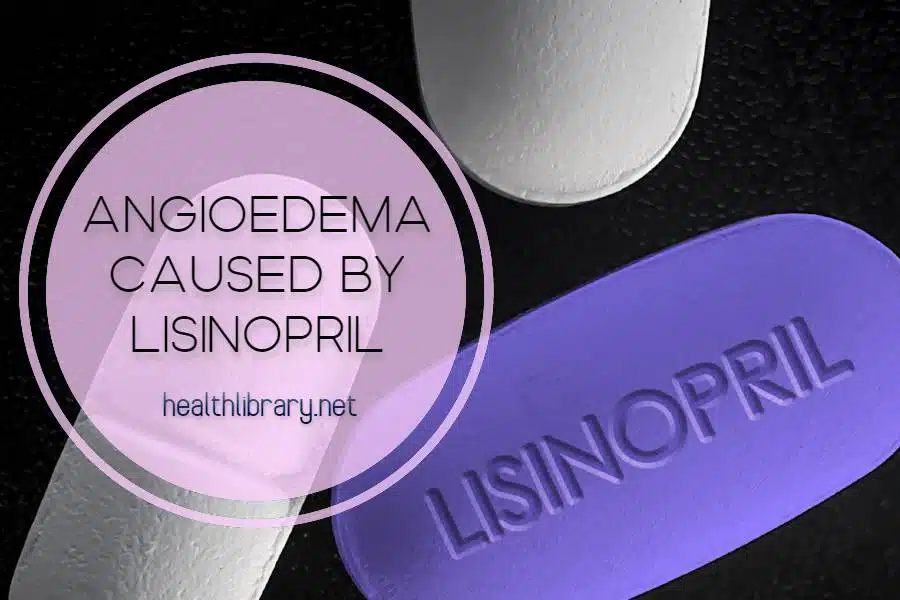Lisinopril is a prescription medication used to treat high blood pressure, but in rare cases, it can lead to angioedema. This condition involves the swelling of soft tissues, such as the lips or eyes, and can be quite serious if left untreated. To learn more about the potential causes and treatments for angioedema caused by lisinopril, please read on.
Table of Contents

Understand the Signs and Symptoms of Angioedema Caused by Lisinopril
Lisinopril-induced angioedema often manifests as fast swelling of soft tissues, most notably around the face, lips, and eyes. It is also possible to have trouble breathing as well as an itchy, burning feeling in certain places.
Angioedema, if left untreated, can lead to possibly fatal airway blockage and other major medical problems. As a result, recognizing the symptoms of this ailment as soon as possible is crucial for commencing correct therapy.
Consult Your Doctor Immediately If You Suspect Angioedema from Lisinopril
If you suffer any of the signs and symptoms of lisinopril-induced angioedema, you should seek emergency medical assistance.
The importance of timely diagnosis and treatment in reducing the risk of life-threatening adverse effects cannot be overstated.
To evaluate if lisinopril is causing your symptoms, your doctor may do blood tests or a CT scan.
Once identified, your doctor can recommend the appropriate treatment approach for your illness, which may include modifying dosages of drugs to lower your risk of future angioedema episodes.
Request to Switch Your Medication
If you suffer any of the signs and symptoms of lisinopril-induced angioedema, you should seek emergency medical assistance.
The importance of timely diagnosis and treatment in reducing the risk of life-threatening adverse effects cannot be overstated.
To evaluate if lisinopril is causing your symptoms, your doctor may do blood tests or a CT scan. Once identified, your doctor can recommend the appropriate treatment approach for your illness, which may include modifying dosages of drugs to lower your risk of future angioedema episodes.
Use Home Remedies for Treating Mild Cases of Angioedema Caused By Lisinopril
Home treatments can be quite effective in treating mild instances of lisinopril-induced angioedema.
Avoiding allergens, avoiding unexpected changes in temperature and humidity, wearing loose-fitting clothing, administering a warm compress to the afflicted area for 15 minutes every few hours, and taking an antihistamine are some of the most effective strategies.
Additionally, if feasible, try to lower stress levels, since this might exacerbate symptoms.
Utilize Alternative Therapies for Managing the Symptoms of Angioedema Caused By Lisinopril
Alternative treatments can potentially be beneficial in alleviating the symptoms of lisinopril-induced angioedema.
Acupuncture has been shown to lower inflammation, while yoga and mindfulness methods can aid with relaxation and stress reduction.
Massage treatment can assist to relieve muscle stress, while aromatherapy helps calm the skin.
If you are contemplating any of these therapies, you should first contact with a doctor or alternative practitioner.
How to make angioedema swelling go down?
Angioedema swelling can be treated by:
- Anti-histamines
- Corticosteroids
- Epinephrine (adrenaline) injection
- Avoiding triggers (such as allergens)
It’s important to seek medical attention promptly for proper diagnosis and treatment, as some forms of angioedema can be life-threatening.
Will angioedema go away?
Angioedema can resolve on its own or with appropriate treatment. The length of swelling varies according on the underlying cause and severity.
Mild instances may resolve within a few hours, however severe ones may need several days. Angioedema may repeat or become chronic if left untreated or if the underlying cause is not addressed.
If you have angioedema symptoms, you should seek medical assistance right once.
How common is angioedema?
Angioedema is a prevalent illness that affects both children and adults.
The actual incidence is unknown, although it is anticipated that 1 in 50 people will suffer with angioedema at some point in their life.
Angioedema can be minor to severe, and the frequency and severity of symptoms can vary widely between people.